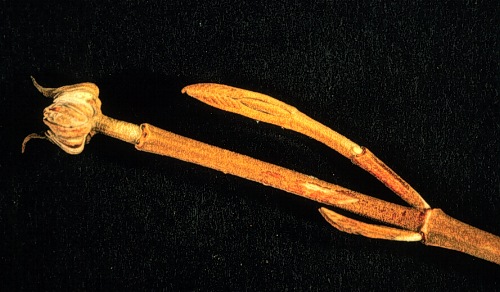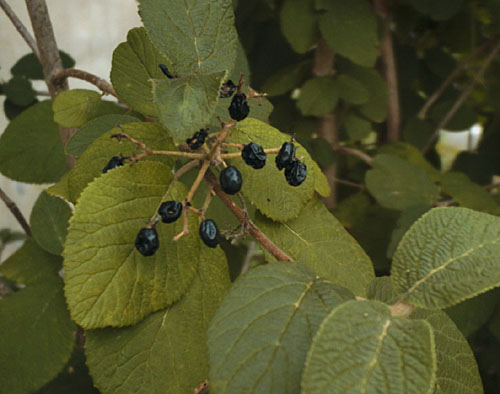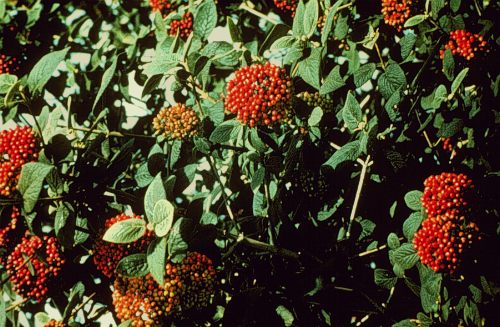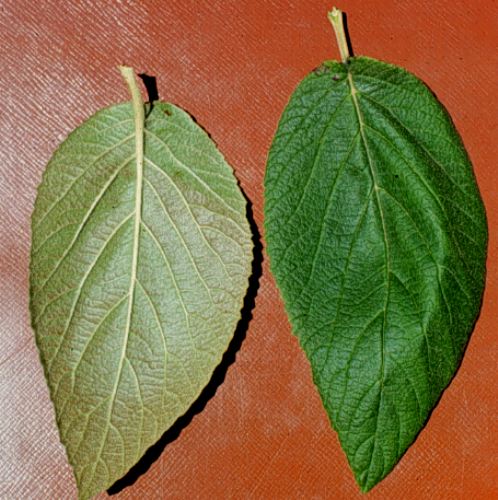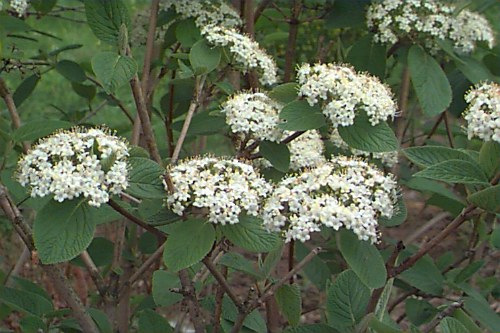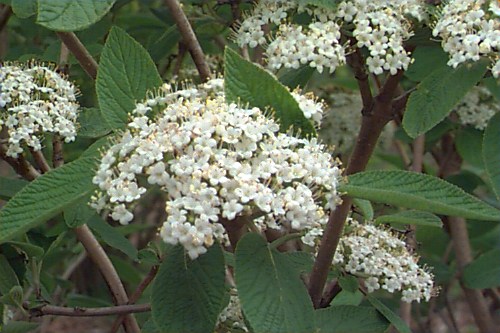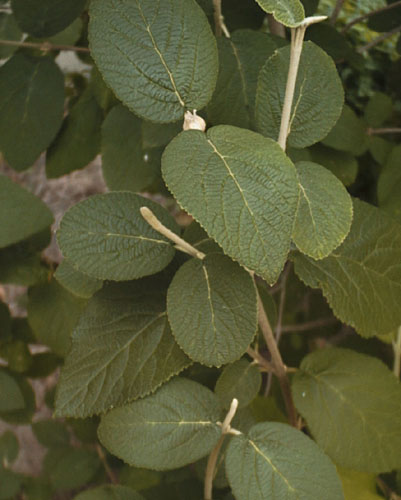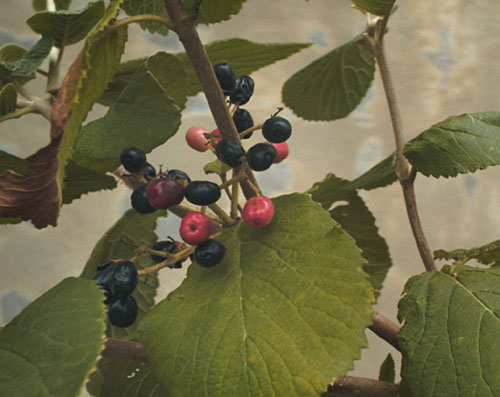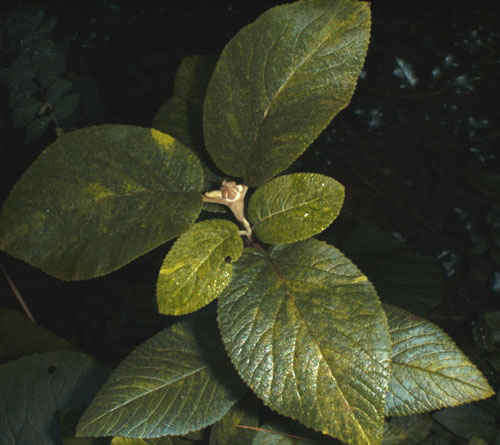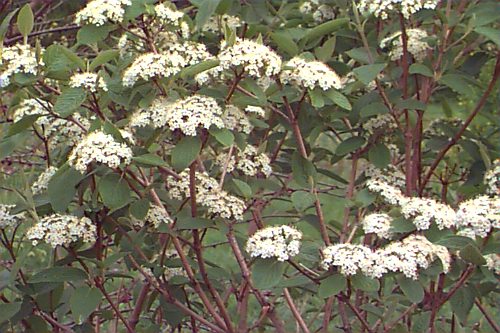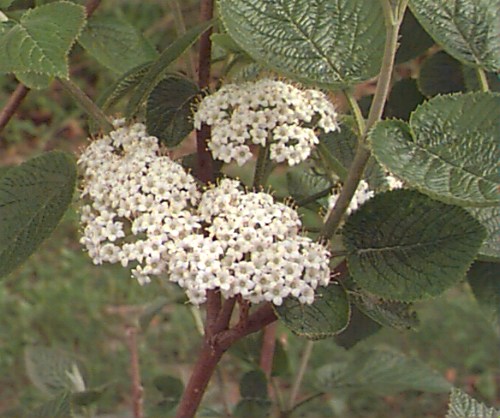Viburnum lantana
Wayfaringtree Viburnum
Caprifoliaceae
ExpandHabitat
- native to Europe and western Asia
- hardy to zone 4, possibly 3
Habit and Form
- a large, deciduous shrub
- reaching 10' to 15' tall or taller
- multistemmed
- branches are stout and coarse
- shape is rounded
- branching is upright and spreading
- old plants can have irregular branching
- tends to get leggy at the base with age
Summer Foliage
- opposite, simple leaves
- leaves are ovate
- leaf base is cordate to rounded
- leaf apex is acute and pointed
- leaves are 2" to 5" long
- leaf margin with uniform serrations
- underside of leaves are tomentose
- upperside of leaves are wrinkled
- leaves are somewhat leathery
- leaf color is dark gray green
- buds are naked, gray and tomentose
Autumn Foliage
- often poor
- can be somewhat purplish-red
Flowers
- small white flowers with yellow stamens in flat clusters
- flower clusters are 3" to 5" across
- moderately showy in bloom
- bloom time is mid-May
- generally quite floriferous
Fruit
- berries are held in flat clusters
- color changes from green to red to blue-black
- color change occurs in August and September
- each fruit cluster can display all colors at the same time
- quite showy in fruit
- can dry and persist like raisins
- birds like the fruit
- best fruiting occurs when several clones are planted together
Bark
- light gray brown
- not an important ornamental feature
Culture
- full sun to partial shade
- withstands dry, compacted soils
- tolerant of higher pH soils than some viburnums
- easily transplanted and established
- best growth on fertile, loamy soils
Landscape Use
- shrub borders
- mass plantings
- difficult growing sites
- as a barrier
- for erosion control
- useful for flowers and fruit
- to attract birds
Liabilities
- few serious insect or disease problems
- leaf spot disease is occasionally a problem
- somewhat coarse textured in the winter
- often used as a rootstock for V. carlesii and suckers, overtaking the carlesii top
ID Features
- naked, fuzzy buds
- twigs are grayish-white and tomentose
- opposite, ovate leaves with cordate or rounded bases
- leaves with regular serrations
- coarse, stout branching
Propagation
- by cuttings
- by seed
Cultivars/Varieties
'Aureum' - Offered occasionally by specialty nurseries, this form displays golden-yellow young foliage on a smaller growing 8' plant. The color will usually dull to green by midsummer. 'Versicolor' is similar in habit.
'Emerald Triumph' - A hybrid selection, this plant grows smaller than the species to 8' tall and wide. The foliage is leathery and dark green, but the plant is most notable for its fruit that remain red for weeks before darkening to black. Hardy to zone 4, this is a good choice for New England gardens.
'Mohican' - The most popular form of this species, this U.S. National Arboretum introduction is more useful in the landscape due to its compact size (to 9' tall and wide, usually smaller). The foliage is dark green, but the most outstanding ornamental attribute are the fruit. The drupes retain their orange-red coloring for a month or more in midsummer before they darken in fall.
'Variegatum' - Actually a handsome form, this plant features leaves that are attractively mottled with yellow. The foliage is attractive upon close examination, and the variegation persists on new leaves that are produced throughout the season.
